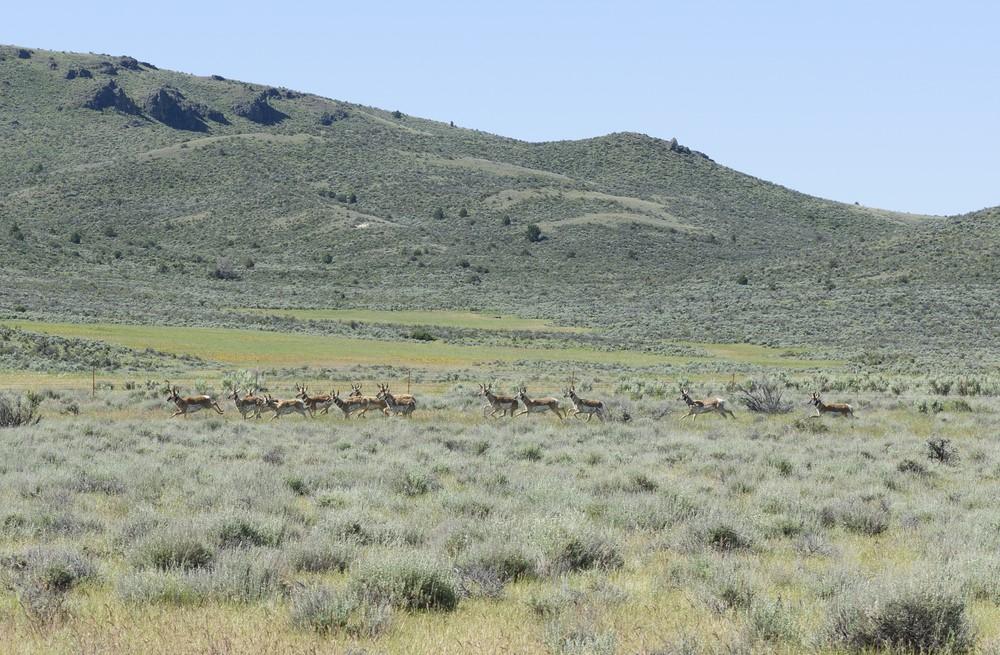
The state’s recent call for action to fight the delta variant stirred some ripples in a few urban counties, but rural areas which have low vaccination rates are taking a quieter approach to the pandemic.
At least one has seen hopeful signs: Umatilla County, where the vaccination rate is 48% of adults 18 and older.
Last week the county’s public health director, Joseph Fiumara, noted that vaccinations went up. Public health officials and providers administered 660 vaccine doses, compared with 578 shots the prior week.
Fiumara said it’s too soon to say whether that’s the start of a new trend but health officials have continued to administer more than 500 a week since mid-June, with demand holding steady.
“I’m hopeful with case numbers going up, with renewed recommendations around masking with renewed concerns with this delta variant — I’m hoping that’s a trend we’re going to see,” he said in an interview with The Lund Report.
Fiumara said county officials are stressing the positive in encouraging vaccinations rather than focusing on the threat posed by the delta variant.
“We haven’t taken the delta variant head on because we’re not trying to stoke fear,” he said. “We’re not trying to cause panic and fear to make someone choose this decision.”
Fiumara said people are more receptive to a message about how their neighbors, friends and family members are getting vaccinated.
“What we’re trying to show people is choosing to get vaccinated is not a minority decision,” he said. “It’s not a crazy decision. It’s not an outlier.”
Though counties have no COVID-19 restrictions now, he said the public should not assume the state won’t bring them back if the pandemic takes a turn for the worse.
“If cases and rates become out of control and the hospitals fill up and locally nobody makes any restrictions or puts anything in place to curb cases, I assume the state will step in at some point,” he said. “We don’t know what that point is.”
Officials Shy from Mandates
So far, Gov. Kate Brown and the Oregon Health Authority are only encouraging masks — not mandating them. The authority and governor did so on Tuesday, one day after Multnomah County became the first county in Oregon to recommend masks for everyone in indoor public spaces.
Leaders in rural counties say that they, too, recommend masks in indoor places. But health officials stress that masks are not a long-term solution. Vaccinations are.
“Locally-driven response efforts are what is needed at this stage in the pandemic to reach unvaccinated Oregonians,” Charles Boyle, Brown’s spokesman, said in a statement. “One-on-one conversations at the local level between friends and family members, as well as messages delivered by trusted messengers like doctors and family health care providers are the most effective way to reach vaccine-hesitant individuals. Masks are one measure to stop the spread of COVID-19, but to beat back COVID-19 for good we need to reach unvaccinated Oregonians to get their questions answered, so that they can join the seven in 10 adult Oregonians who already have received at least a first dose.”
So far, nearly 2.5 million Oregonians — or about 70% of adults — have received at least one dose of a vaccine, state data released Wednesday show. The Modern and Pfizer vaccines each require two doses spaced several weeks apart. The Johnson & Johnson vaccine requires just one dose.
Malheur County Efforts
In Malheur County, the vaccinations are being given at a “steady slow pace,” Sarah Poe, the county’s public health director, said in an interview with The Lund Report.
The county’s vaccination rate is 38%, virtually tied with Lake County for the lowest ranking of Oregon’s 36 counties.
The county has vaccination staff this week at the Malheur County Fair, a five-day event that started Tuesday. The health authority also sent staff to help administer doses, Poe said.
“We definitely have a long way to go,” Poe said, adding she’s hopeful that the county’s vaccination rate will increase as more people overcome their hesitancy after taking a “wait and see” approach.
Malheur County leaders, like others in rural Oregon, say that trust will drive up vaccination rates — not more restrictions.
“For us, I would much prefer to build that relationship on trust and support and not on mandates and restrictions and anything that’s more punitive,” Poe said.
In Morrow County, where the vaccination rate is 45%, the demand for shots has slowed despite its public awareness efforts. The county has contracted with a public information officer, partnered with community-based organizations and broadcast messages on Spanish radio stations, said Nazario Rivera, Morrow County public health director.
Rivera said the county will continue to urge people to get vaccinated but he said it’s pretty much up to them, now.
“Unfortunately, we haven’t seen the huge number we had at the beginning,” he said of demand. “After we got through that rush, we’ve definitely seen a decline in folks. At this point, folks in my opinion know where to access vaccine if they want it.”
You can reach Ben Botkin at [email protected] or via Twitter @BenBotkin1.
